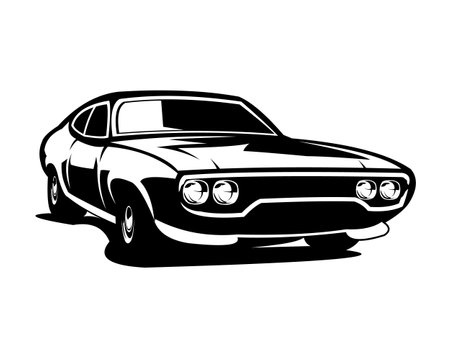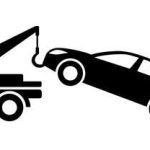1. The Origins of Street Racing in the 1950s
After World War II, America underwent significant cultural and economic changes. One of the most exciting developments was the birth of street racing. With thousands of soldiers returning home, the late 1940s and early 1950s saw a surge in interest in cars, speed, and competition. For many, modifying and racing their vehicles became a thrilling pastime.
Returning Soldiers and the Need for Speed
Many veterans had learned mechanical skills while serving in the military. Upon returning home, they applied this knowledge to civilian life, especially in the world of automobiles. With factories shifting from wartime production back to consumer goods, cars became more powerful and accessible.
The Rise of Hot Rod Culture
During the 1950s, young car enthusiasts began customizing their vehicles to gain an edge in street races. Stripping cars of unnecessary weight, upgrading engines, and improving aerodynamics became common practices. This movement led to the creation of the hot rod subculture, which emphasized performance and style.
Common Hot Rod Modifications in the 1950s
| Modification | Purpose |
|---|---|
| Engine Swaps | Increased horsepower for faster acceleration |
| Weight Reduction | Removed unnecessary parts to improve speed |
| Lowered Suspension | Better handling and aerodynamics |
| Custom Exhaust Systems | Improved performance and enhanced sound |
Street Racing in American Cities
Illegal street racing started popping up in cities across the U.S., including Los Angeles, Detroit, and Chicago. Late at night, racers would gather on quiet stretches of road to test their modified cars. These races were mostly informal, but the sense of excitement and danger made them irresistible to thrill-seekers.
The Police Crackdown Begins
As street racing grew in popularity, so did concerns about safety. Law enforcement began taking action to curb illegal racing, often chasing down drivers or setting up roadblocks. Despite this, the underground racing scene continued to thrive, leading to the development of more organized racing events in the years that followed.
2. Muscle Cars and the Rise of Underground Racing (1960s-1980s)
The 1960s and 1970s were the golden era of muscle cars in America. With powerful V8 engines and aggressive styling, cars like the Ford Mustang, Chevrolet Camaro, and Dodge Charger became symbols of speed and rebellion. These high-performance machines didn’t just dominate drag strips—they also fueled the underground street racing scene.
The Muscle Car Revolution
During this time, American automakers focused on producing cars with massive horsepower and raw torque. The availability of big-block V8 engines made street racing more intense than ever. Young enthusiasts craved the thrill of stoplight-to-stoplight races, often modifying their cars to gain an edge.
Popular Muscle Cars in Street Racing
| Car Model | Engine | Horsepower |
|---|---|---|
| 1969 Chevrolet Camaro Z/28 | 302ci V8 | 290 HP |
| 1970 Dodge Challenger R/T | 426ci HEMI V8 | 425 HP |
| 1967 Ford Mustang Shelby GT500 | 428ci V8 | 355 HP |
Law Enforcement Crackdown
As street racing became more dangerous and widespread, law enforcement ramped up efforts to put a stop to illegal races. Radar detectors, speed traps, and police crackdowns on known racing hotspots became common. Cities implemented stricter laws, and police impounded modified cars involved in illegal races.
The Role of Car Clubs and Racing Spots
With increased police attention, street racers started forming car clubs to organize races in more secluded locations. Abandoned industrial areas, empty highways, and even dry lake beds became popular spots. Racing culture thrived underground despite constant law enforcement pressure.
Escaping the Police
Street racers developed tactics to evade capture, such as using police scanners, organizing fake races to distract officers, and even hiding their cars in garages after high-speed pursuits. However, with advancements in police technology, escaping became more difficult.

3. Three. The Import Scene and Tuner Culture (1990s-2000s)
By the 1990s, street racing had shifted from the American muscle cars that once dominated the scene to lightweight, high-revving Japanese imports. Cars like the Honda Civic, Acura Integra, Mitsubishi Eclipse, and Nissan Skyline gained popularity due to their affordability, reliability, and tuning potential. This new wave of street racing was fueled by a growing aftermarket industry that allowed enthusiasts to modify their cars for improved speed and performance.
The Shift from Muscle Cars to Japanese Imports
Unlike the heavy, V8-powered muscle cars of past decades, Japanese imports offered a different kind of performance. These smaller, more agile vehicles relied on turbocharged engines, high-revving four-cylinders, and advanced technology to deliver speed. Their popularity skyrocketed thanks to the rise of “tuner culture,” where car enthusiasts would modify their vehicles with aftermarket parts, body kits, custom paint jobs, and performance upgrades.
Comparison of Muscle Cars and Japanese Imports
| Feature | Classic Muscle Cars (1950s-1970s) | Japanese Imports (1990s-2000s) |
|---|---|---|
| Engine Type | Large V8 engines | Turbocharged or high-revving inline-four and six-cylinder engines |
| Weight | Heavy | Lightweight |
| Acceleration | High torque, quick straight-line speed | Agile handling, strong high-end power |
| Customization | Limited modifications, mostly engine-based | Extensive tuning options, including suspension, aerodynamics, and electronics |
The Impact of The Fast and the Furious
The release of The Fast and the Furious in 2001 played a massive role in popularizing the import tuner scene. The movie showcased heavily modified Japanese cars, intense street races, and a vibrant underground culture. It introduced mainstream audiences to concepts like nitrous oxide (NOS), engine swaps, and drifting, inspiring a new generation of car enthusiasts.
Key Cars Featured in the Movie
- 1995 Mitsubishi Eclipse
- 1993 Mazda RX-7
- 1995 Toyota Supra
- 2001 Honda S2000
- Nissan Skyline GT-R R34
The Rise of Tuner Culture
During the late 1990s and early 2000s, the tuner scene exploded, with car meets, street races, and aftermarket parts becoming widely available. Tuner magazines, online forums, and car clubs helped spread the culture worldwide. Enthusiasts competed not only in straight-line speed but also in drifting and time attack events, further pushing the boundaries of automotive performance.
Popular Modifications in the Tuner Scene
- Turbocharger and supercharger upgrades
- Performance exhaust systems
- Lowered suspension and coilovers
- Widebody kits and custom aero parts
- ECU tuning and engine management systems
The import scene of the 1990s and 2000s reshaped street racing and car culture as a whole. With the influence of movies, media, and a thriving aftermarket industry, the tuner movement made a lasting impact on the automotive world, setting the stage for modern street racing.
4. Modern Street Racing and the Role of Technology
Street racing has changed drastically over the years, and today, technology plays a crucial role in shaping the scene. From electronic tuning to social media and even mobile apps for organizing races, modern street racing looks very different from the underground races of the past.
The Impact of Digital Technology on Street Racing
With advancements in digital technology, street racers now have access to high-performance tuning tools that were unimaginable in previous decades. Modern engine tuning software allows racers to optimize their cars performance without major mechanical modifications. Here are some key ways digital technology has influenced street racing:
| Technology | Impact on Street Racing |
|---|---|
| ECU Tuning | Allows racers to modify engine performance with a laptop. |
| Auto Diagnostic Tools | Gives racers real-time engine data to optimize performance. |
| GPS Tracking | Helps racers map routes and avoid law enforcement. |
| Dash Cameras | Records races for analysis and social media sharing. |
How Social Media Has Transformed Street Racing
Social media has completely changed how street racers connect and organize events. Platforms like Instagram, TikTok, and YouTube allow racers to share videos of street races, showcase modified cars, and build a following. Online communities also make it easier for racers to find like-minded enthusiasts and set up events.
The Role of Mobile Apps in Street Racing
While street racing has traditionally been an underground scene, mobile apps have made it more organized. Some racers use encrypted messaging apps or private social media groups to arrange races without attracting attention. Here are some ways mobile apps are used:
- Navigation Apps: Racers use apps like Google Maps or Waze to find remote locations with minimal traffic.
- Race Organizing Apps: Some use encrypted chat apps to plan events discreetly.
- Performance Apps: Apps like Dragy or RaceLogic track a car’s speed and acceleration in real-time.
The Future of Street Racing Technology
As technology continues to evolve, street racing will likely change even more. With the rise of electric and hybrid cars, racers are exploring new ways to modify their vehicles. Additionally, AI-powered tuning and smart driving technologies could further impact the way street racing operates in the future.
5. Legal Alternatives and the Future of Street Racing
While illegal street racing continues to attract thrill-seekers, legal alternatives have gained momentum over the years. These organized events provide a safe and controlled environment for racers, helping reduce the dangers associated with illegal racing. Additionally, advancements in automotive technology, including electric vehicles and autonomous driving, are shaping the future of racing in unexpected ways.
Growth of Legal Racing Events
Many cities and car enthusiasts have pushed for legal racing venues as a safer alternative to unlawful street racing. Organizations and racetracks offer dedicated spaces where drivers can test their skills without endangering the public. Some popular legal alternatives include:
| Legal Racing Event | Location | Key Features |
|---|---|---|
| Drag Strips | Nationwide | 1/4-mile or 1/8-mile races on sanctioned tracks |
| Autocross | Nationwide | Short courses focusing on speed and handling |
| Track Days | Local Race Tracks | Open laps for drivers to test their cars safely |
| Street-Legal Drag Racing | Various Cities | Closed-off streets converted into legal race zones |
Push for Safer Alternatives
Communities have started working closely with racing enthusiasts to create more legal outlets for the sport. Police departments, city officials, and car clubs have collaborated on designated race nights, reducing street racing incidents while keeping the excitement intact. Organizations like the National Hot Rod Association (NHRA) promote racing programs that bring competitors to safe, regulated tracks.
Another aspect of safer alternatives involves better education on the dangers of illegal street racing. With social media and car clubs spreading awareness, younger generations are being guided toward legal tracks for their need for speed.
The Role of Electric Vehicles in Racing
With advancements in electric vehicle (EV) technology, performance models like the Tesla Model S Plaid and Lucid Air have demonstrated astonishing speed on the track. EVs bring instant torque and acceleration potential, making them a serious competitor in the drag racing scene.
Benefits of EVs in Racing
- Instant torque for rapid acceleration
- Less mechanical wear compared to traditional combustion engines
- No emissions, making racing more environmentally friendly
Some racing series, like Formula E, highlight the potential of electric motorsports. As more manufacturers embrace EV performance, street and legal racing events could see a shift toward electric dominance.
Autonomous Technology and the Future of Racing
Autonomous technology is also making its way into the automotive world. While many see self-driving cars as the opposite of street racing culture, others believe AI-driven vehicles could create a new style of competition. Robot racing leagues, such as Roborace, showcase how artificial intelligence (AI) can be programmed for high-speed driving without human intervention.
Potential Impacts of Autonomous Racing
- Exploring the limits of AI-controlled vehicles
- Reducing human risk in high-speed racing
- Paving the way for advanced driver-assist technologies
While traditional street racing culture relies on human skill and reaction time, autonomous technology may introduce a new era of precision-based competitions.


